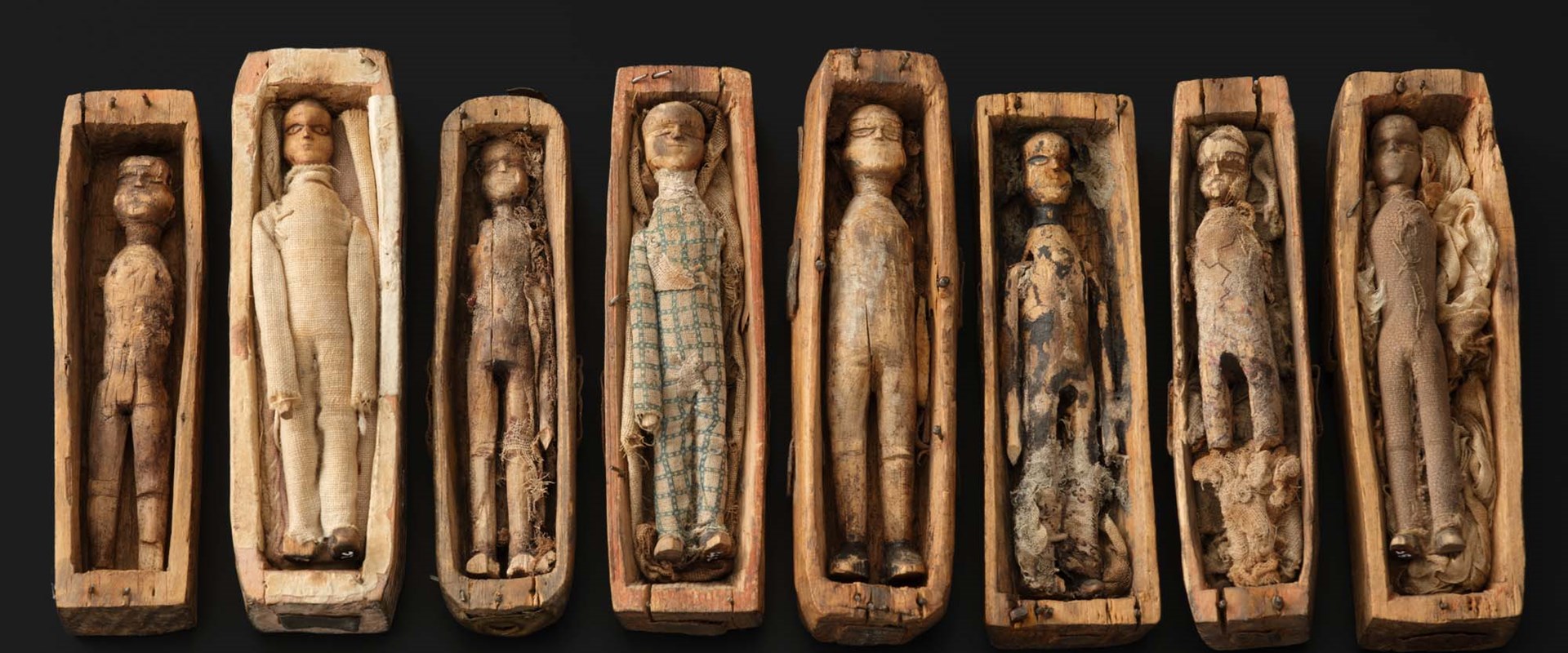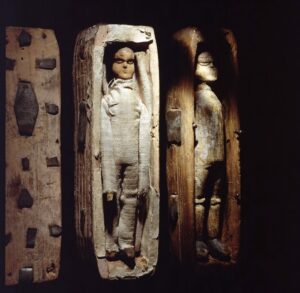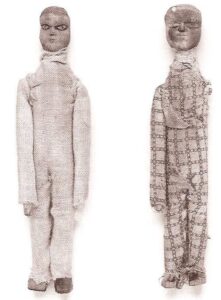The Voodoo Soldiers of Arthur’s Seat, Edinburgh May 1, 2023
Author: Beach Combing | in : Modern , trackback
In 1836 some children discovered a hidden niche on the edge of Arthur’s Seat. In this niche were three shelves, two with eight and one with one miniature coffin and body. Each ‘unit’ had four elements: a coffin, a coffin lid, a doll and clothes. These coffins are the subject of this month’s Boggart and Banshee podcast. Only eight of the seventeen survive in the Edinburgh Museum. But even a brief look at the photographs will show that they are incredible productions.

Chris makes on the podcast a convincing argument that these dolls were put in place as an act of magic or counter-magic: the core of her argument relates to the clothes attached to the dolls. Chris also, though, acknowledged that the coffin dolls had been repurposed and that they had had some kind of past life, presumably involving children: poignantly some of the dolls are lacking legs and arms. These dolls had not been made for the coffins. Rather the coffins were made to fit around the dolls.

What were the ‘corpses’, in their previous existence? Dolls were used for everything from family games (dolls houses etc), to Nativity or Noah Ark recreations, and to soldiers. The most likely explanation for these particular dolls is, surely, that they began their lives as soldiers. Menefee and Simpson who looked at the dolls in our best article on the subject certainly favoured this explanation:
The figures have a rigidly erect bearing with straight backs, and the contours of the lower half of their bodies are carefully formed to indicate tight knee breeches and hose below which the feet are blackened to indicate ankle boots. In contrast, the upper trunk and the long arms are more rudimentary, and are probably designed to be covered by a military tunic. The arms of each figure comprise a single piece of light wood inserted in a hole drilled between the shoulders, bent down at each shoulder and brought to a point at the ‘hand’. It is suggested that this would enable the arms to be swung backwards to fit in the sleeves of a tunic as well as providing support for a toy weapon… the models were apparently intended to wear hats – hair has been indicated by blackening the back of the head, but not above a scribed ‘hat-line’ which runs round the head. It is suggested that in their original guise as toy soldiers, the figures were fitted with miniature headgear -possibly bicorn hats.
Chris was not entirely satisfied with the soldier explanation and some of the points above could just be explained by the fact that these dolls were rather crude homemade productions. Chris also points to the lack of similar examples with which these ‘soldiers’ can be compared from the early nineteenth century. However, while lacking Chris’ background in doll studies and design, what makes them soldiers for me is their relative uniformity. Why else would a doll-maker, amateur or professional, create (at least) seventeen almost identical figures? For instance, the height of those eight that survive ranges from 3.2-3.4 inches, a tiny difference. I’m also fascinated by the absence of female dolls.
If we accept, as I think we must, that these were soldiers, then, we have two possibilities. The most likely one is that these soldiers were ‘to hand’ and that they became the individuals the cunning man or woman wished to represent magically. The other possibility – and this is a wild suggestion – is that this was magic aimed in some way against the British state.
Any other suggestions: drbeachcombing AT gmail DOT com


